It seems that every week and every new announcement regarding the Type 26 Frigate brings claims that the Clyde is being “sold out” or “betrayed”, this week Australia is somehow at fault.
This week is no different.
For most, the recent news that Australia is building 9 Type 26 Frigates in Australia as part of a £20 billion deal is great news. A good summary of the benefits can be found in an analysis from the well respected defence commentary website SaveTheRoyalNavy.org which can be found here.
It is expected about 65% of the equipment fitted to the Hunters will be domestically sourced as the Australians naturally want to maximise the benefits to their own industry. BAES will now have to conduct an extensive round of negotiations with many potential suppliers in Australia and globally.
The exact break down of benefits to UK manufacturers is obviously not yet available but the Rolls Royce prime movers and the David Brown gearboxes will be UK-made. Overall economies of scale across the supply chain will help reduce both construction and through-life costs for both nations.
For some however, this news is evidence of a massive anti-Scottish conspiracy. The tweet below is a prime example of what I’m talking about.
Headline:
“BAE Systems lands £20bn deal to build Australian warships”Reality:
Built in Australia under licence, not the Clyde.Sold out again. pic.twitter.com/wrsL6ETpEK
— Guffers (@gavmacn) June 28, 2018
You’ll note however that no officials, no politicians, no companies and no governments have ever said the Australian frigate fleet would be Clyde built and as to how the Clyde has been “sold out” is anyone’s guess. After spending £20 billion most would assume Australia might want their first ship home built and in the water before the end of the British production run on the Clyde in the 2040 period.
As shown below, some even believe this is part of a plan to (for no apparent reason) cancel work already underway on the Clyde and build the vessels in a shipyard in Australia. Normally I’d try to go into detail on why that’s far fetched but in this instance, the impracticality speaks for itself.
Once OZ have built a few type 26 Frigates
How long do you think the promise to the Clyde will last.How long to “we only build our Frigates in the UK”is be forgotten
Why do you think the Clyde order was reduced last year!
-You Just Can’t Trust a Tory- pic.twitter.com/Nz3jcwWs5P— Brendan Hynes (@Hyvast) June 29, 2018
The reduction in order hes referring to by the way, was simply the first batch of the ships being ordered. Ordering in batches is common for projects of this size around the world and was last seen with the Royal Navy for the Type 45 Destroyers and recent Offshore Patrol Vessels. The Type 45s first batch order was for three vessels for example. Ordering this way allows for changes to specifications and allows for refinements to contracts as working practices evolve and efficiencies are learned.
Does the UK have complex warships built in other countries?
Recent claims that Scotland would be eligible to compete for Royal Navy warship contracts if the country left the UK have been rejected by the Ministry of Defence and Parliamentary Under-Secretary of State for Defence, Guto Bebb.
Guto Bebb, Parliamentary Under-Secretary of State for Defence, recently confirmed this policy in response to a written parliamentary question:
“The National Shipbuilding Strategy (paragraph 92) was clear that for reasons of national security, the UK prioritises the need to retain the ability to design, build and integrate warships.”
According to the ‘National Shipbuilding Strategy’ document, there are three tenets regarding UK shipbuilding policy that impact on the build location of contracts:
- For reasons of national security, all Royal Navy warships (destroyers, frigates and aircraft carriers) will continue to have a UK-owned design, and, will be built and integrated in the UK. Warship build will be via competition between UK shipyards. But international partners will be encouraged to work with UK shipyards and other providers to produce the best possible commercial solution.
- All other naval ships should be subject to open competition (provided that there are no compelling national security reasons to constrain a particular procurement to national providers). Integration of sensitive UK-specific systems will be done in the UK, where possible after competition between UK providers.
- Defence will take account of wider factors (including the impact on UK prosperity) when making these procurement decisions.
Many politicians in Scotland had been criticised on social media for suggesting that Britain’s new Type 31e frigates would be built in Scotland if the campaign for independence was successful.
First Minister of Scotland Nicola Sturgeon had claimed at the time of the referendum that the only option for BAE on the event of independence was to continue to build the ships in Glasgow, this however was denied by a GMB convener at the Scotstoun yard in Glasgow:
“She was saying that the Clyde is the only game in town. I’m afraid it is not. There’s shipbuilders in Cammell Laird in Liverpool. You have got the A&P Group on the Tyne, who are shipbuilders, and you have got Barrow in Furness. So to say if Scotland goes independent we will still be building frigates… listen, I assure you that if we go for independence we will not be building. We have been told quite clearly by the UK government and I have been told quite clearly that will not happen.”
The issue of UK naval contracts on the Clyde had become controversial after the 2014 Independence Referendum and even more so recently when several groups indicated that the work would not go to an independent Scotland. Shipbuilding trade union leaders had previously told Ms Sturgeon to stop “using” them by claiming that British warships would continue to be built on the Clyde in the event of independence as they know that not to be the case.
Nicola Sturgeon had earlier insisted that it would be a “betrayal” to go back on its promise to build the frigate fleet on the Clyde. Sturgeon said:
“Promises were made about orders to these yards and promises were made about jobs at these yards, and I think it is absolutely vital now these contracts are delivered. These yards have been through some really difficult times with a reduction in the workforce, and they thought that that was all part of the process of getting themselves into shape for the Type 26 and securing a level of employment here.
This is about jobs and securing jobs in an industry. It would be a complete betrayal of these yards if there was any U-turn or going back on on promises made.”
Doesn’t the UK build ships overseas anyway?
Many have misconstrued the building of a naval tanker in South Korea for the RFA as a break in this policy, that is not the case. Support vessels like this are eligible to be constructed outside the UK as only ‘complex warship’ construction (such as destroyers and frigates as outlined above) must stay within UK borders. Besides, no UK yard bid for the work.
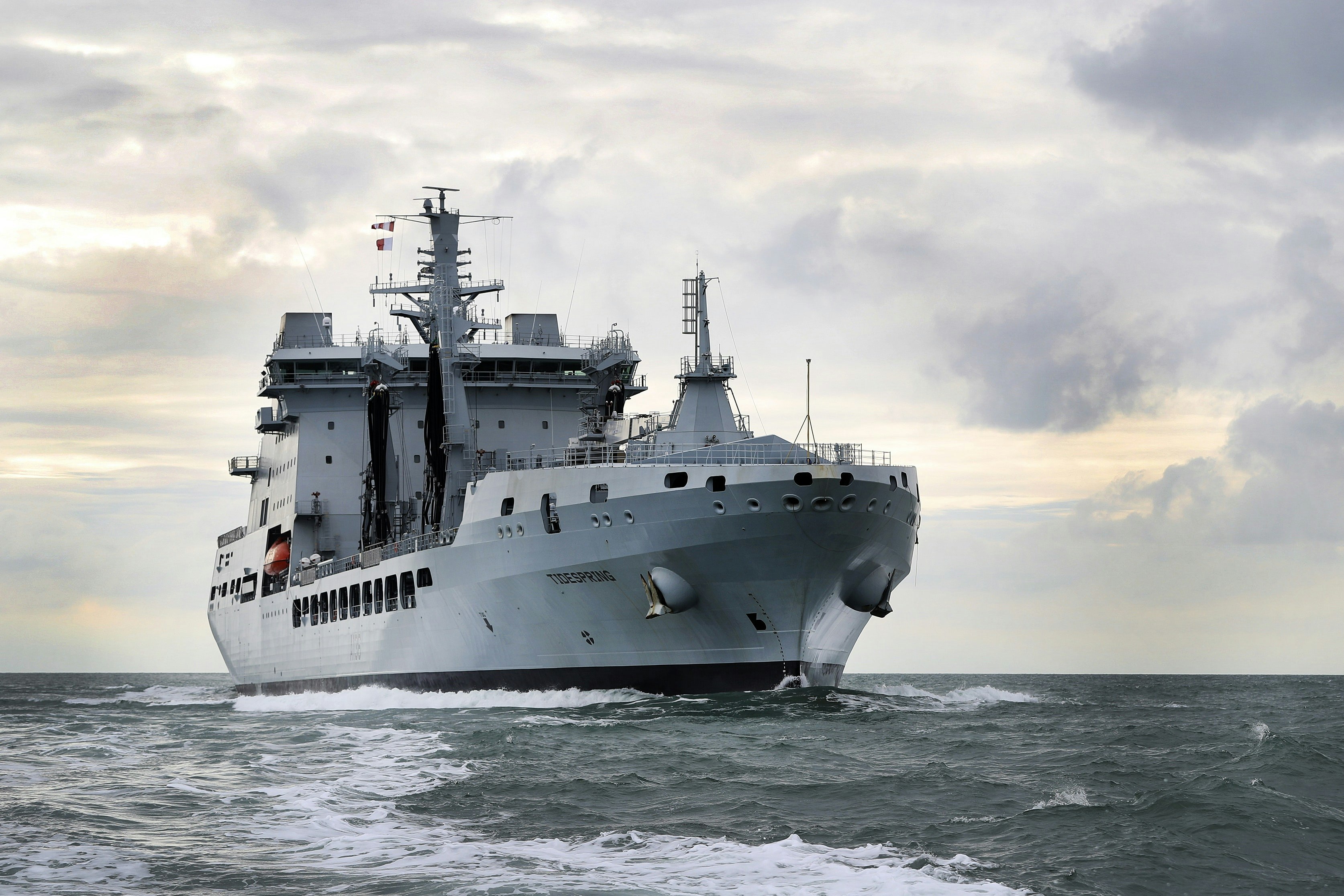
Other than procurement activity undertaken during the World Wars, the UK has not had a complex warship built outside of the UK since the start of the 20th century at least. All of the Royal Navy’s new complex warships are being built in UK shipyards and the UK Government says it remains committed to utilising the strengths of UK industry in this specialist and complex area.
There is the matter that companies based in an independent Scottish state would no longer be eligible for contracts that the UK chose to place or compete domestically for national security reasons as this would be protected under Article 346 of the treaty on the functioning of the European Union which allows states to declare contracts related to defence or national security exempt from external tendering. Where they could continue to compete, they would be pitching for business in an international market dominated by major economic powers.
There’s also the matter of contracts using US technology, defence contractors that work with items or technology of US origin are also covered by undertakings given in accordance with the US International Traffic in Arms Regulations (ITAR), under which any change to an existing US export licence requires US State Department approval. An independent Scottish state would be a third-party country, not covered by existing UK-US ITAR agreements.
UK companies would not have authority to transfer items and information that is subject to ITAR licence to their subsidiaries or other companies in an independent Scottish state or to a Scottish national, without US approval, anymore than it could transfer such material to organisations or individuals in other foreign states. Every licence held by companies in Scotland working on ITAR-controlled items would have to be re-approved if Scotland became independent.
Isn’t Scotland the only location in the UK capable of building warships?
Claims at the time of the referendum that the only option for BAE on the event of independence was to continue to build the ships in Glasgow were refuted at the time by John Dolan, GMB convener at the Scotstoun yard in Glasgow:
“She was saying that the Clyde is the only game in town. I’m afraid it is not. There’s shipbuilders in Cammell Laird in Liverpool. You have got the A&P Group on the Tyne, who are shipbuilders, and you have got Barrow in Furness. So to say if Scotland goes independent we will still be building Type 26 frigates… listen, I assure you that if we go for independence we will not be building.
We have been told quite clearly by the UK government and I have been told quite clearly that will not happen.”

Modern shipbuilding makes considerable use of prefabricated sections. Entire multi-deck segments of the hull may be built elsewhere around the UK, transported to the building dock or slipway, then lifted into place and assembled into one ship. This is known as block construction and is far more cost effective.
How many ships are the Clyde shipyards actually expecting to build?
There’s a lot of misunderstanding and myth circulating about how many ships the shipyards on the Clyde are expecting to build, but what’s the truth?
Recent news that BAE have decided not to bid to assemble the Type 31e Frigate on the Clyde due to an apparent lack of interest has created a stir in Scotland after earlier expectations that the light frigates would be built there. BAE themselves say that shipbuilding capacity on the Clyde will be maxed out until the mid 2030s while the Ministry of Defence want the first of the new Type 31 Frigates in service by 2023, one of the primary reasons they have decided not to bid as prime contractor for the project, there’s no space at the BAE yards on the Clyde to do so if they are to meet the deadline for the first Type 31e to hit the water.
BAE say the move will allow them to ‘appropriately support the National Shipbuilding Strategy’ whilst ensuring the delivery of the five Offshore Patrol Vessels and the City class Type 26 frigates currently on contract, ‘to time, budget and to the highest quality standards.’
In a press release BAE say:
“BAE Systems is focused on the manufacture and delivery of the two QE Class carriers, the five River Class Offshore Patrol Vessels (OPV) and the first three City class Type 26 warships, as well as continuing to develop and upgrade combat management systems on all Royal Navy ships. Taking account our current and future workload, including Type 26, our shipbuilding capacity on the Clyde will be full until the mid 2030s.”
So, what does the prospective order-book BAE are talking about actually look like for the next few decades? We’ve included the contracted and non-contracted work the Clyde is expected to build to give an idea of the scale of work already present as BAE cite this as a reason for not bidding for T31e on the Clyde.

Eight Type 26 Frigates are to be built in total by their designers BAE, the contract for the second batch will be negotiated in the early 2020s. Why have we included it despite this? There are no other yards in the UK to build the Type 26, it’s a BAE product and their only surface shipyards are in Glasgow. The ships are not going anywhere unless the Royal Navy take the incredibly unlikely decision not to replace their frigate fleet.
The UK Government committed to eight advanced anti-submarine warfare ships in its 2015 Strategic Defence and Security Review (SDSR). The Type 26 programme currently employs more than 1,200 people in the UK supply chain, with a number of contracts already in place for the manufacture of the first three ships. In total, there are already 33 UK and international companies working in the supply chain to deliver the Type 26 ships – with further announcements to be made shortly.
The only way the Type 26 wouldn’t go to the Clyde is if the Royal Navy decided not to replace its frigate fleet.
Could the Type 31 still come to the Clyde?
Babcock recently announced it will lead a team of industry partners in a bid for the new £1.25 billion Type 31e Frigate with work to be undertaken in Scotland, England and Northern Ireland. Babcock say work would be shared across the UK its facilities in Fife and Devon being among the prime locations for building. Ferguson Marine on the Clyde will also be in line for the work.
The build plan for the Type 31 Frigates is expected to follow a similar pattern to that of the Queen Elizabeth carriers and early Type 45 Destroyers in that blocks will be built in yards around the UK and assembled at one main location.
Modern shipbuilding makes considerable use of prefabricated sections. Entire multi-deck segments of the hull may be built elsewhere around the UK, transported to the building dock or slipway, then lifted into place and assembled into one ship. This is known as block construction and is far more cost effective. Yards pre-install equipment, pipes, electrical cables and any other components within the blocks, to minimise the effort needed to assemble or install components deep within the hull once it is welded together.
Babcock will act as the overall programme lead, whilst Thales will have overall responsibility for the development of the Mission System solution. The make-up of the team, the company say, will ensure that the economic benefits of the programme are shared across the UK. Ferguson Marine on the Clyde, Harland & Wolff in Belfast and the Babcock facilities in Fife and Devon will all have ‘key roles to play’, while much of the equipment provided by Thales and others will support jobs across the UK.
The option to build the Type 31e frigates in blocks reflects how the biggest ship ever built for the Royal Navy, HMS Queen Elizabeth, was constructed. The aircraft carrier was built in blocks by over 10,000 people in six main British cities.
Tony Douglas, the Chief Executive Officer of DE&S, said,
“The Type 31e programme will drive the change that is needed through the entire system, because we have set tough time and cost constraints. The collective challenge for DE&S and industry is to deliver Type 31e in a different, more innovative way than has gone before. I want this to be a transformation in the way we do business – not just in ships and acquisition but across the entire defence equipment and support portfolio.”
Why has BAE decided not to build the Type 31e Frigate on the Clyde?
The Clyde is working on 5 Offshore Patrol Vessels and is planning to build 8 Type 26 Frigates, compared to an original plan to build 13 Type 26 Frigates at the yards in Glasgow.
As we reported, BAE Systems has announced a partnership with Cammell Laird, who would ‘Prime, build and assemble’ the vessels at their Merseyside facility while the Clyde will focus on the Type 26 Frigates. If the bid is successful, Cammell Laird would be main contractor with BAE providing design and combat systems.
BAE themselves say that shipbuilding capacity on the Clyde will be full until the mid 2030s while the Ministry of Defence want the first of the new Type 31 Frigates in service by 2023. BAE say the move will allow them to ‘appropriately support the National Shipbuilding Strategy’ whilst ensuring the delivery of the five Offshore Patrol Vessels and the first three City class Type 26 frigates currently on contract, ‘to time, budget and to the highest quality standards.’
Why has the plan changed?
The MoD is hoping to reduce its reliance on BAE and cut the costs of procurement by spreading shipbuilding work across civil and naval yards around the UK. To this end, the government are implementing the results of an independent report into the National Shipbuilding Strategy by Sir John Parker which recommended that the Type 31 Frigate build be spread across the UK, with blocks and components being constructed in yards in both Scotland and England.
The National Shipbuilding Strategy was intended to be a “radical, fundamental re-appraisal of how we undertake the shipbuilding enterprise in the UK, intending to place UK naval shipbuilding on a sustainable long term footing”.
BAE themselves signalled their own reluctance to bid for the Type 31 Frigate as prime contractor due to concerns of a “race to the bottom” on price. Speaking to The Herald here, BAE managing director Iain Stevenson signalled the defence firms lack of interest on building the vessel:
“We do want to be involved in Type 31. But we have questions. Does it have a budget? What are the timescales. We have not got solid facts. Type 31 could be a race to the bottom. If it is a front price contract people might bid for it to win and it and it might put them out of business. We would not, because we are BAE Systems.”
The landscape of UK shipbuilding has been shaken up with BAE on the Clyde building the OPV, Type 26 Frigate fleets and the Type 31 Frigate fleet work to be spread around the UK. One of the primary contenders is the Babcock-lead alliance which should see the vessel built around the UK (Including the Clyde and Rosyth) if their bid wins.
Summary
There’s no need for a lengthy summary here, Australia aren’t building ships for the Royal Navy and it is impossible to imagine a realistic situation in which that would even happen. Remember, the Ministry of Defence are aiming to bring spending like this down, not increase it out of the blue for no reason.






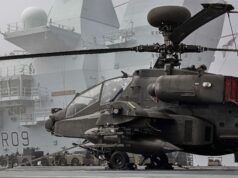
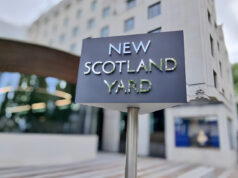


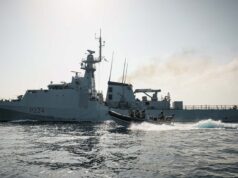
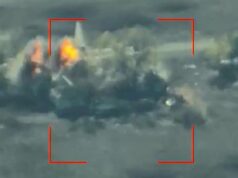

I was under the impression that the second Type 26 Frigate HAS been named HMS Cardiff.
Probably an old image.
Please see the caption under that image, accidentally used an old image.
Likewise, I doubt that the tonnage of future batches of T26s will vary much from batch 1.
I’m not sure on that comment. I can imagine that the T26 will get stretched possibly in the bow section and midships. The reason for the stretch could be to incorporate dragonfire or an EM gun.
Likewise ??
The Clyde has guaranteed work for the next 20 years, they have absolutely nothing to complain about, other British shipyards would give their left ear for that type of guarantee.
I think the Type 31s should be built at Cammel Lairds on the Mersey, I don’t mind Scotland getting most Royal Navy ships but they can’t have every single last one without exception. I do think Babcocks at Rosyth should get the F.S.S. ships though, their large dry dock and gantry crane would be ideal, with blocks built around the U.K.
I live a stones throw from Cammel Laird and would love to see frigate builds there.
That said, I would rather they were building T26 than T31-e.
I would much rather see T26 under UK license, either in block sections assembled at C.L. (Norn’ Ireland, Appledore etc.), or even full build if necessary.
As they are “fitted for not with” I really doubt the hull costs of a capable ASW hull will be cheaper after all the development costs than a non ASW hull.
What people need to get their head around is this:
Nations that want a vessel of the size and complexity of a T26 with high guarantee of build quality and advanced technologies tend to also want them built in domestics yards with significant ToT.
Countries that don’t want or can’t build vessels in domestic yards tend to want simpler vessels with ‘good enough’ systems and weapons from yards that can severely undercut the UK usually in South East Asia.
As Humphrey alluded on TheThinPinstripeLine blog the Bongozwanaian Navy is hardly going to be interested in paying for a T26 or T31 for that matter when they can buy an export variant of the Type 056 Corvette for less from the Wuchang yard in China. The Type 056 Corvette might have significantly inferior build quality and survivability but the Bongozwanaian Navy is hardly going to care as long as it is bristling with missiles and looks nice when being shown off to the President!
FYI china sold two P18N (Type 056 Corvette export variant) to Nigeria for £32 million each!
Please see the caption under that image, accidentally used an old image.
OMG how greedy are the Scottish shibuiiders always bloody moaning they want everything there own way take the contact away from them give something real to moan about
Scottish ship builders arent moaning tho.
Its halfwitted grievance mongering nationalist politicians who are doing all the moaning.
I think it is good new, for everyone with Australia joining the program, hopefully Canada will follow with 15 to be assembled in Canada so over 30 type 26. That will improve overall unit costs so hopefully the Royal Navy can ask for the full number. If so benefiting Scotland. So for jobs it is good news for the U.K., US, Australia and Europe, suppling the technology and components for these Ships. If Canada hopefully follows that is more components so everybody wins. The next step is the Type 31e so we can export to the likes of New Zealand to replace their 2 old ships plus the RN requirements, again using modular design to the benefit of all. Whether there is merit in the US looking at the type 26, lead by Lockheed Martin as constructors by of the issues with the Freedom and Independence class ship I don’t know. If true it would be great bring costs down for everyone.
xcellent news, a very good article. I hope Canada join the type 26 program. 30 ships a big potential to reduce unit costs which may bring in New Zealand, also increase the RN batch to 8. Otherwise get the Type 31e sorted could be what New Zealand needs. Do you think Cammell Laird is in the pound seat for type 31e with Bea systems support and world wide reach. Is there any merit behind the US Navy looking at the type 26, with Lockheed Martin as constructor, for a frigate given the independence and freedom issues, they are close to Bea systems and R&R.
‘First Minister of Scotland Nicola Sturgeon had claimed at the time of the referendum that the only option for BAE on the event of independence was to continue to build the ships in Glasgow’
The amount of things that she has claimed on zero evidence would pile higher than Everest. As they say, the human body has 7 billion nerve cells and Ms Sturgeon gets on all of them.
“Many have misconstrued the building of a naval tanker in South Korea for the RFA as a break in this policy, that is not the case. Support vessels like this are eligible to be constructed outside the UK as only ‘complex warship’ construction (such as destroyers and frigates as outlined above) must stay within UK borders. Besides, no UK yard bid for the work”. But when were the last naval military warship tankers built abroad for the UK? No UK firm bid, because UK firms knew they were being pushed out of the game back then. A decision had already been made years before and eu rules were involved or used in this.
[…] https://ukdefencejournal.org.uk/the-clyde-and-the-type-26-frigate-a-never-ending-source-of-conspirac… […]
Also. Out of a total 600 million-plus contract for those tankers, only 25% was UK content and much of that could have been foreign sourced. Never again. If those 3 Fleet Solid Supports Ships (that must be staff requirements) are not build here (which would have a huge amount of UK content too), it would be the biggest devastating answer from this Uk government on the real future of UK shipbuilding warship and commercial. It would be yet again needless decline by government design and vested interests.
Definitely
(Chris H) Absolutely right. Whitehall needs to change the assessment and ask why our ships should NOT be built here rather than make UK shipyards change the foregone conclusion they will NOT be built here.
The ‘powers that be’ just cannot understand the difference between ‘Price Paid’ and ‘Nett Cost’ when spending the UK taxpayer’s money. And this isn’t their money its ours…
Chris – I would love to see the Support ships built in the UK, but no company in the UK should be given a blank cheque if we truly want to become an exporter again. UK contracts should enable the yards to invest and become efficient and world leaders so they can compete for more orders internationally. This is what the national ship building strategy is about. If we don’t do this then we’ll always be paying more, hull numbers go down and inevitably yards will close.
The condition is that Uk yards invest with taxpayer contracts and the NAO and other can estimate shipbuild costs. It’s not a black art. But I agree, you cannot have a UK firm saying OK, it 3 billion quid to build these 3 ships. Incredibly, if all tax clawback from workers, firms and all suppliers in the UK is taken into consideration, some reports estimate it could be over 50%. Total cost could still be around only just under one and half billion pounds. It will not be this much nett, but if the total cost before tax is around 1.5 billion pounds for 3 ships, it is a good price which should see investment employment and apprenticeships in many sectors and as well as money returned for MoD contracts, also a little for our dear old NHS, if they wish.
We have to keep honest. True.
Always a sub-plot with communists. Free trade will always be evil.
The article confuses two separate issues, one of which has ramifications. The first is Scottish Nationalism and Its Discontents. This is a one dimensional and never changing Gripe Complex. It is beyond human solution. The second is suppling modern warship to the Royal Navy. This a chronic multidimensional paradox independent in a very real way from the first. Trying to combine these two issues coherently in one article is impossible. See: Stabbed In The Back, Bannockburn, Darien Scheme, World Cup, etc, etc.
thanks
Hey guys – you would think Unions in Adelaide would be happy about the announcement of 9 Type 26 to build in our city. But wait:
http://www.abc.net.au/news/2018-06-30/500-shipbuilding-jobs-still-at-risk-despite-sa-frigates-win/9925788
Unions the world over seem always to complain about decisions made by non-Labor governments!
‘Unions the world over seem always to complain about decisions made by non-Labor governments!’
Because it’s not like such governments don’t try to remove the power of organised labour while allowing the power of the rich & privileged to become more entrenched, is it ?
Errr… Actually the article lambasts the ex-labour govt that did not order or build a single warship during its tenure thus ensuring many job losses. For goodness sake, if you’re going to comment on an article – read it first!
‘Errr… Actually the article’ – missing the point, I’m afraid. I was responding to Steve’s comment, not the article.
The comment about unions was a reference to the article he posted in the link. The comment being incorrect as the Union in the article was bashing labour. You have responded to a comment that was nonsensical because neither of you have read the article he posted.
(Chris H) Time to bite this bullet hard. Type 31 must be given to a non – Scottish yard. I know certain individuals will label me racist and a bigot as they have before (like I care) but as an Englishman I am bitterly disappointed at how people in England, Wales and Northern Ireland are treated when compared to the Scottish in overall terms. I realise Sturgeon and the SNP will never ever be satisfied until they achieve independence – fine I understand that but that doesn’t mean the other 92% of the UK population must dance to their tune.
5 x Type 31s is not the same as 8 x Type 26s so the 3 x FSS ships must also be built here in the UK. Belfast is as capable as Rosyth (possibly more so) to assemble modules built elsewhere. Rosyth has only ever assembled two ships – the QE carriers – and was an excellent naval repair yard before. So let them become a centre of excellence for nuclear submarine and other naval ship recycling which is possibly more complex than, and has as much value as, building frigates. Its Devonport’s loss but they have a wider refit, maintenance and operational source of work.
I have said before that the 3 x FSS ships are a great basis for 2 x larger LPDs and 2 x large LHDs. That is a run of 7 x 30,000 ton hulls giving better economies of scale and delivering new capabilities at lower cost in a timeframe when, for LPDs, the Albions will need replacing or at least having their workload reduced to extend life. The new LHDs could be smaller versions of the original US ‘Wasp’ Class with full Well Deck access. What is certain IMHO is that the 3 x FSS ships must NOT be built abroad for the ‘Price vs Nett Cost’ reasons laid out by myself and others before.
As for Sturgeon & Co given they are now manipulating UK devolution to deliberately obstruct the declared will of the UK Electorate and the UK Parliament in regards to Brexit we should lance this boil, give them their ‘Indyref2’ and nail it one way or the other for a generation. Except a ‘generation’ is apparently only 4 years in SNP Scotland …. Either way we get rid of the SNP who make the Scots sound too entitled and when expectations are not met they are rather good at playing the victim. All rather sad for a once proud people
Living in Glasgow, the proud home of UK warship-building, I can’t really say I’ve heard anyone complaining about being “sold-out” – or muttering about “conspiracies”! The only thing I hear people complaining about is the unseasonably high temperatures!
The chunterings of a couple of silly old Scot Nats on social media is hardly news! Or indeed representative of a nation!
Bit of a non-story really …….
UK Defence Journal team, I really expect better of you!
Why? We’ve been covering this for years.
Living in Glasgow, as do most of our team, I can say I have heard people complaining about being “sold-out” – or muttering about “conspiracies”!
If the recent patrol vessels that have been built on the Clyde with all these faults are anything to go by why would the Aussies or Royal Navy want any ships built there.There is other yards that can build them to.